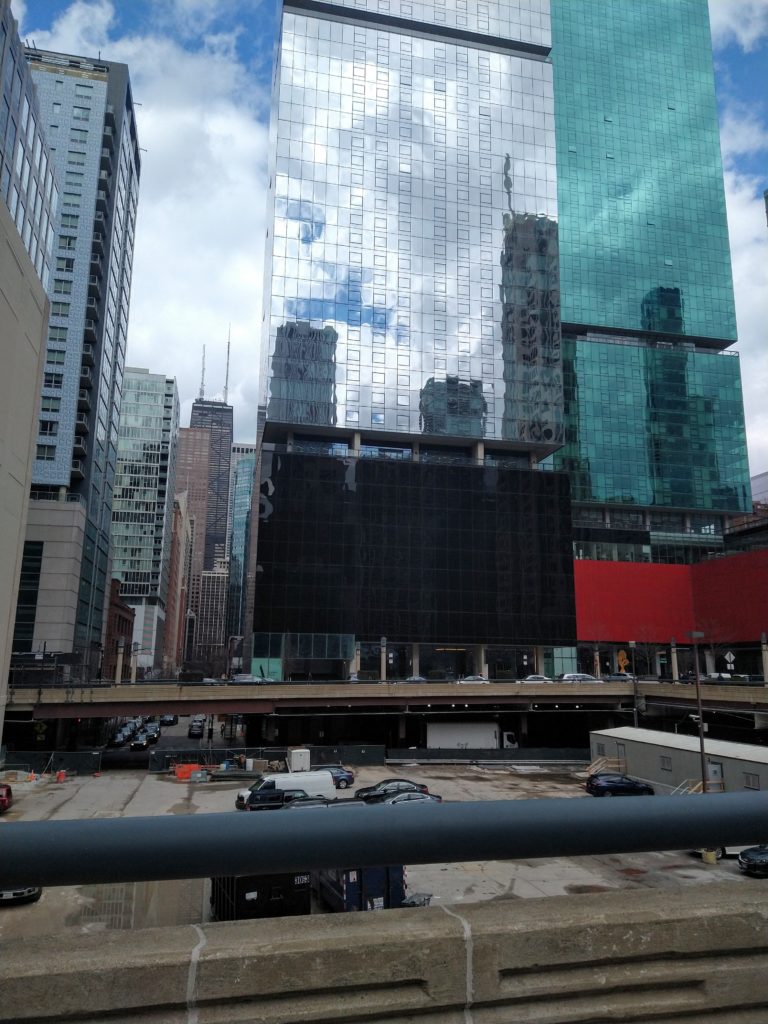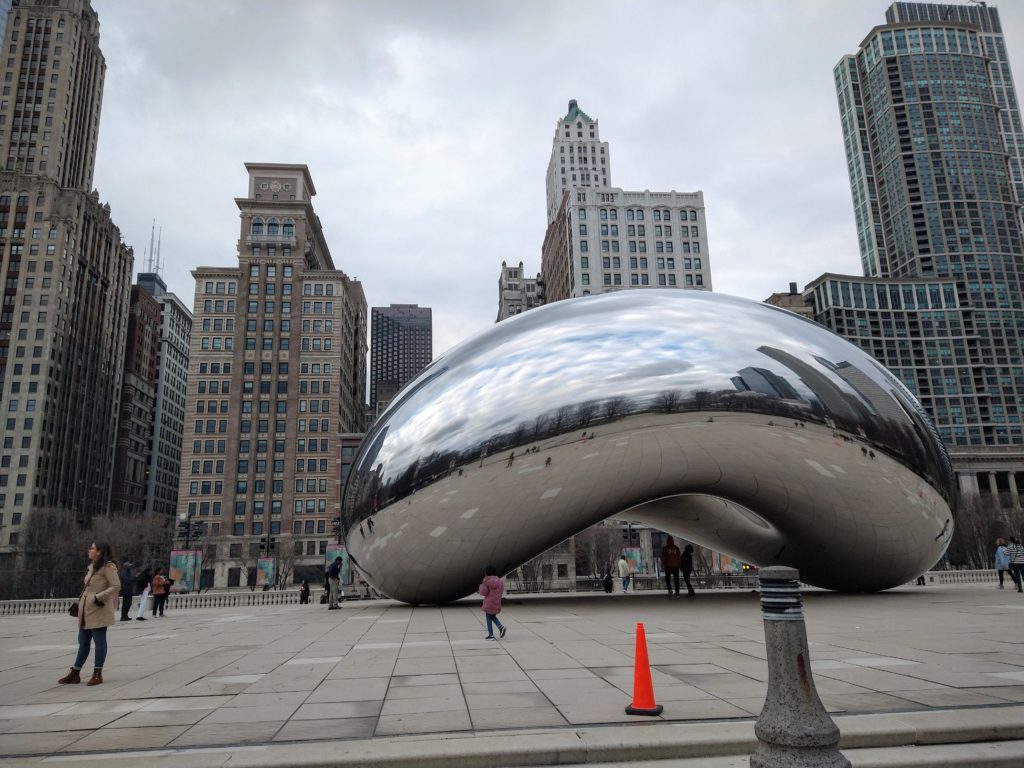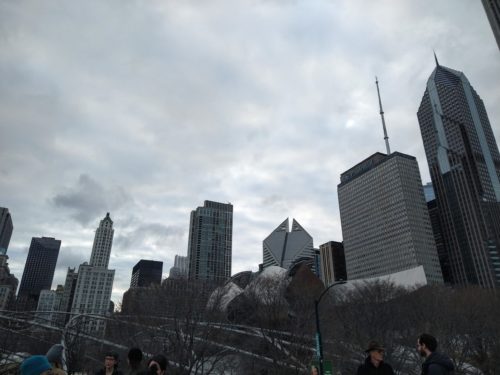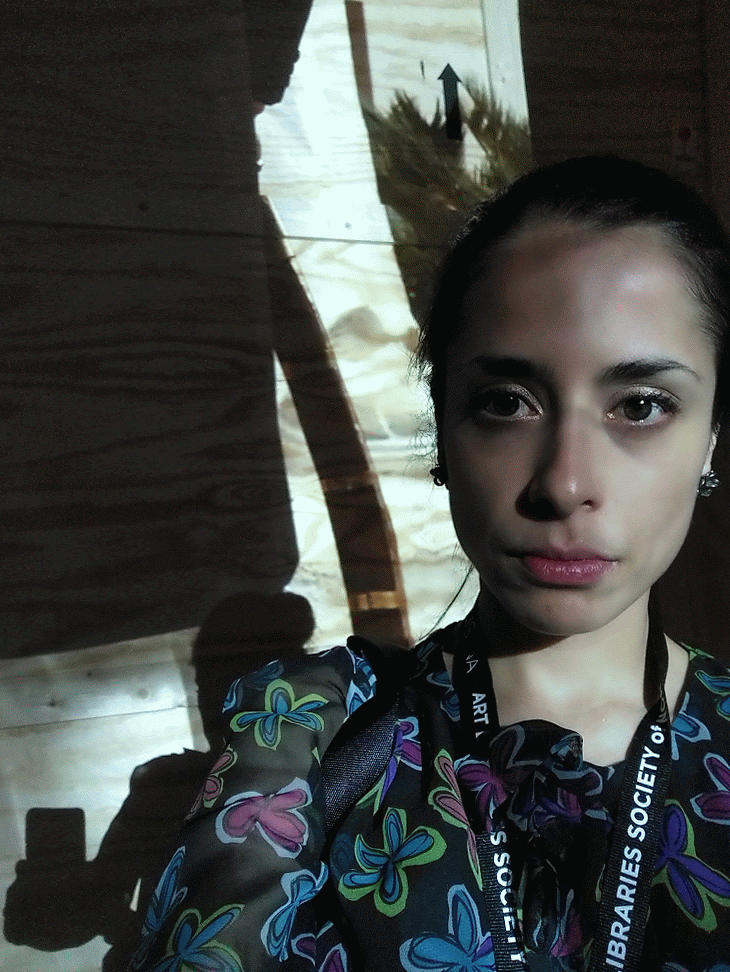
The Michelle Gauthier Travel Award enabled me to attend and present at the ARLIS/NA 50th Annual Conference in Chicago this spring. The award is named after the late Michelle Gauthier (d. 2008). She is remembered for her contagious passion for the arts, her participation in our chapter, and her long career as Head of the Médiathèque of the Musée d’art Contemporain de Montréal up until the beginnings of her doctorate in her later years.1 2 Award in hand, thanks to Gauthier’s legacy and our professional development awards committee, I was able to begin my conferencing journey. Preparing for international travel meant heading from Montreal to Chicago for my first in-person conference since the beginning of COVID-19.
The plane journey offered much-needed time for reflection on the virtual meetings which begin before the in-person conference, including our ARLIS Canada chapter meet-up. These meetings describe a year in the life of our society at both the chapter and parent levels. As a committee member, I attended the Advocacy and Public Policy Committee (APPC) meeting. Relevant to the livelihood of our profession, highlights from the year included our monthly news alerts (i.e. July 2021), special news alerts, and statements.3 Whether on the APPC or other ARLIS/NA committees, these team environments are a great way to get involved, make a difference, and meet colleagues across chapters (see list of committees). The flight also allowed time to settle on which activities to attend. For those who have yet to attend an in-person ARLIS/NA conference, the flurry of activities includes poster sessions, lightning talks, panels and round tables, contemporary art, as well as a convocation ceremony, keynote, upscale reception, and exhibit hall. Together the activities highlight our professional relationship to the arts.
Landing in Chicago for the central part of the conference as a settler of colour, I entered the traditional unceded homelands and waterways of the Council of the Three Fires (Ojibwe, Odawa, and Potawatomi) Nations. I saw myself as a humble guest in a city that is home to one of the largest urban populations of urban Indigenous Americans and the Black communities who, since the 1780s, have made Chicago the city it is. Land Acknowledgements at the beginning of panels and conference activities varied greatly in personalization and practised pronunciation. These recent efforts within an ARLIS conference are a step toward recognizing that galleries, libraries, archives, museums (GLAMs) and educational institutions have long maintained racialized privilege. As part of these self-reflections on colonialism and white supremacy, we might also work on asking ourselves how we stand in reckoning with the legacies of slavery and segregation.
Bursts of fresh air offered respite throughout the conference in anticipation of my panel. Although the architectural tour that I booked got cancelled, the time walking around between sessions was worth every minute. I explored the Chicago Riverwalk. Conference keynote and famed architect Carol Barney designed the riverwalk as an environmental project that helped clean the river. The riverwalk is an elaborate walkable path that makes the downtown more enjoyable to experience outside one’s car, taxi, or Uber. When I raised my hand in the keynote audience of a hundred or so to ask Barney how she saw the deep connection between equity, environmental sustainability, and the absence of cycling infrastructure in Chicago, she suggested looking to European cities like Paris for inspiration.
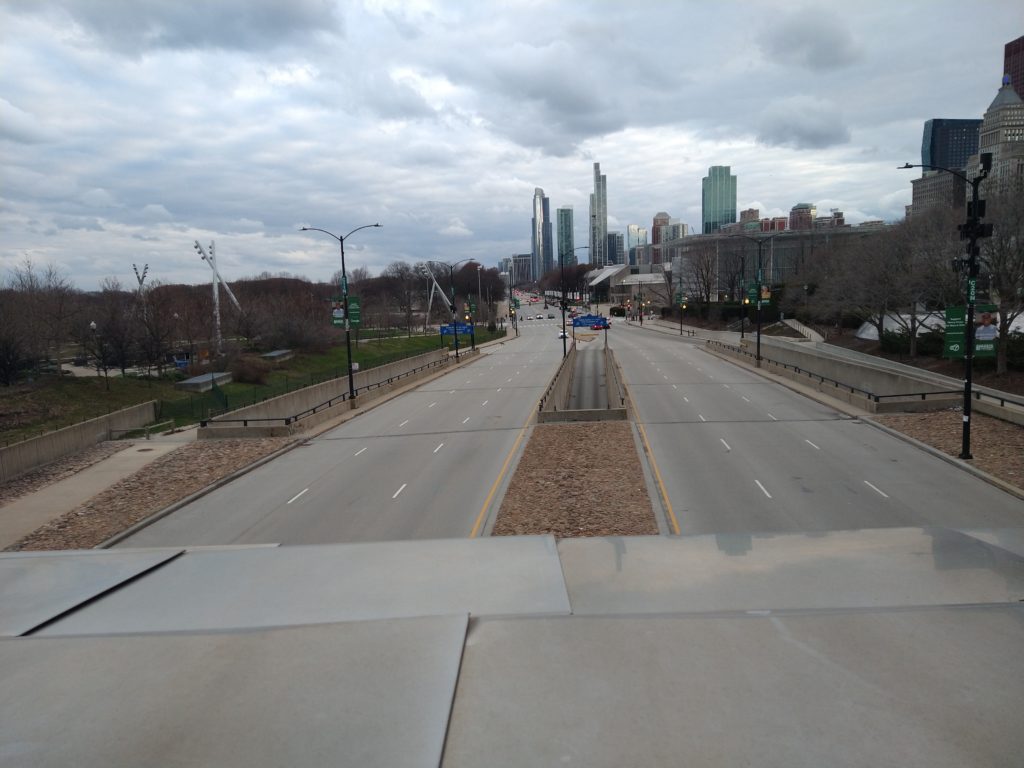
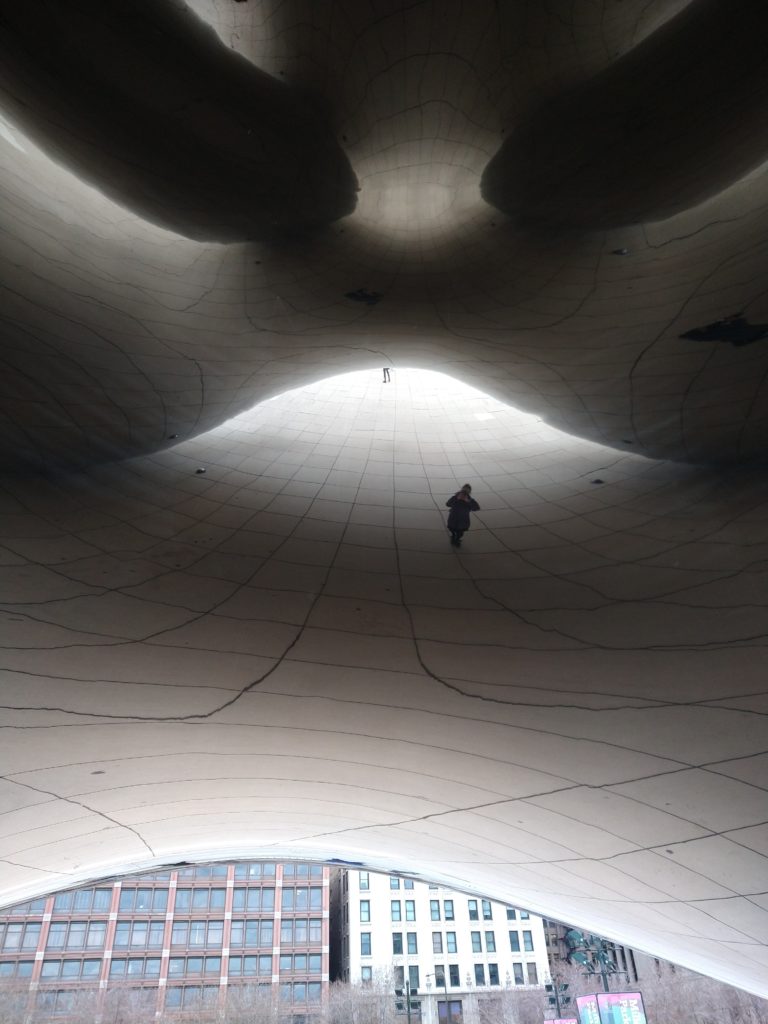
If North Americans share Barney’s vision that equitability can be achieved through our environments, then much more must be done. I look at Chicago as someone who can choose not to own a car: I am a year-round cyclist from the heat of summers to the dead of winter in Montreal. I have also travelled or lived in European cycling-friendly cities like Paris and Berlin. Through the lens of a traveller, I felt struck by Chicago’s vast eight-lane highways that pump through the city, creating ongoing car emissions in an infrastructure that forces car travel and extensive hours in public transit, including to and from Chicago South (Black neighbourhoods) and downtown. Most cannot simply bike or walk to work.
Near the downtown conference hotel in the high life of the New East Side, Millennium Park hosts Cloud Gate, also lovingly nicknamed the giant “bean.” A must-see in Chicago, Cloud Gate is a larger-than-life (33 ft × 42 ft × 66 ft) stainless steel amoeba-like form by world-renowned British-Indian sculptor Anish Kapoor. The metallic surface reflects its surroundings from the sky above to the cement tiled flooring below and Michigan avenue on the periphery. The reach of skyscrapers of all epochs in gothic charm and modern glass reappear distorted in the giant bean. Consumed by the city’s reflection, the sculpture’s smooth curves also engulf nearby tourists (myself included) into the present. The now becomes here.
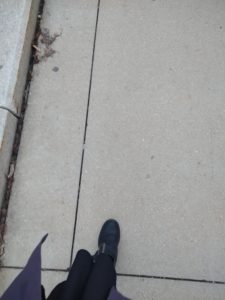
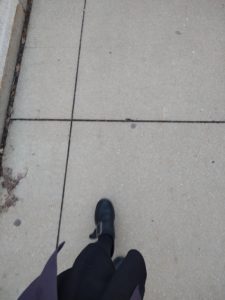

When I look back at the full range of conference activities, I casually asked a single question. I asked prospective and longstanding ARLIS members what they would like to see over the next fifty years. Whatever the difficulty in entering and remaining in art librarianship, especially for BIPOC, hope for the future and concerns about funding resonated as themes. The solutions have been more or less present the whole time. Societal passion for the arts, career-long dedications to librarianship, the vital contributions from Black, Indigenous, and People of Colour (BIPOC) to arts and knowledge fields, and continued funding for the arts will allow the society to see another fifty years.
CONTRIBUTOR
Dr. Rachel Harris
Scholarly Publishing Librarian, Concordia University
Cinema Librarian, Concordia University (at the time of the ARLIS 2022 conference)
IMAGES
All photos by Dr. Rachel Harris.
WORKS CITED
[1] ARLIS/MOQ, “ARLIS/MOQ Annual Report 2008,” 2008, https://www.yumpu.com/en/document/read/33231479/arlis-moq-annual-report-2008-arlis-na-moq/3.
[2] Bujold, Ginette. “Hommage à Michelle Gauthier Femme de Réalisations, de Passions et d’amitiés.” MOQDOC, 2008.
[3] Examples of statements include ARLIS/NA’s statement on illegal aliens used in subject headings and our statement on American legislative efforts to restrict education on racism to help).
[4] Kim Ross, “Ongoing Effort Seeks to Identify and Correct Harmful Terms in PEM’s…,” Peabody Essex Museum, PEM Blog (blog), July 13, 2022, https://www.pem.org/blog/ongoing-effort-seeks-to-identify-and-correct-harmful-terms-in-pems-library-catalog.
[5] Ross.
[6] “Wikipedia:Meetup/Black Lunch Table/July1 BLT Bingo,” in Wikipedia, August 27, 2022, https://en.wikipedia.org/w/index.php?title=Wikipedia:Meetup/Black_Lunch_Table/
July1_BLT_Bingo&oldid=1106965964.
[7] Team, “Introducing the ARLIS/NA Diversity Toolkit,” The Art of Diversity (blog), April 8, 2021, https://arlisdivcom.wordpress.com/2021/04/08/
introducing-diversity-toolkit/.
[8] ARLIS/NA, “2021 ARLIS/NA Applauds Award Recipient – Art Libraries Society of North America,” ARLIS/NA, April 14, 2022, https://www.arlisna.org/news/2021-arlisna-applauds-award-recipient.
[9] “Bani Abidi: The Man Who Talked Until He Disappeared,” MCA, accessed September 18, 2022, https://mcachicago.org/exhibitions/2021/bani-abidi-the-man-who-talked-until-he-disappeared.


